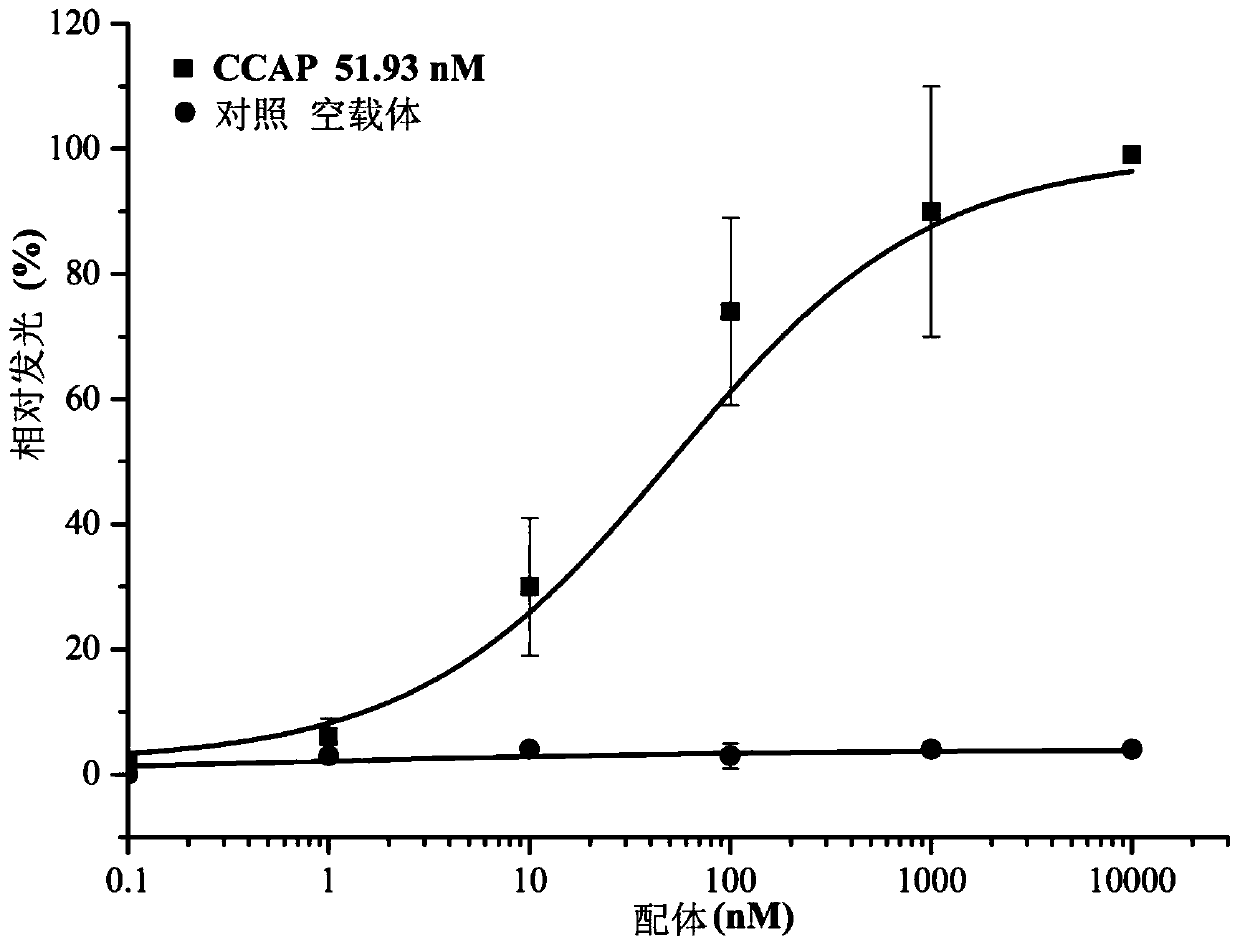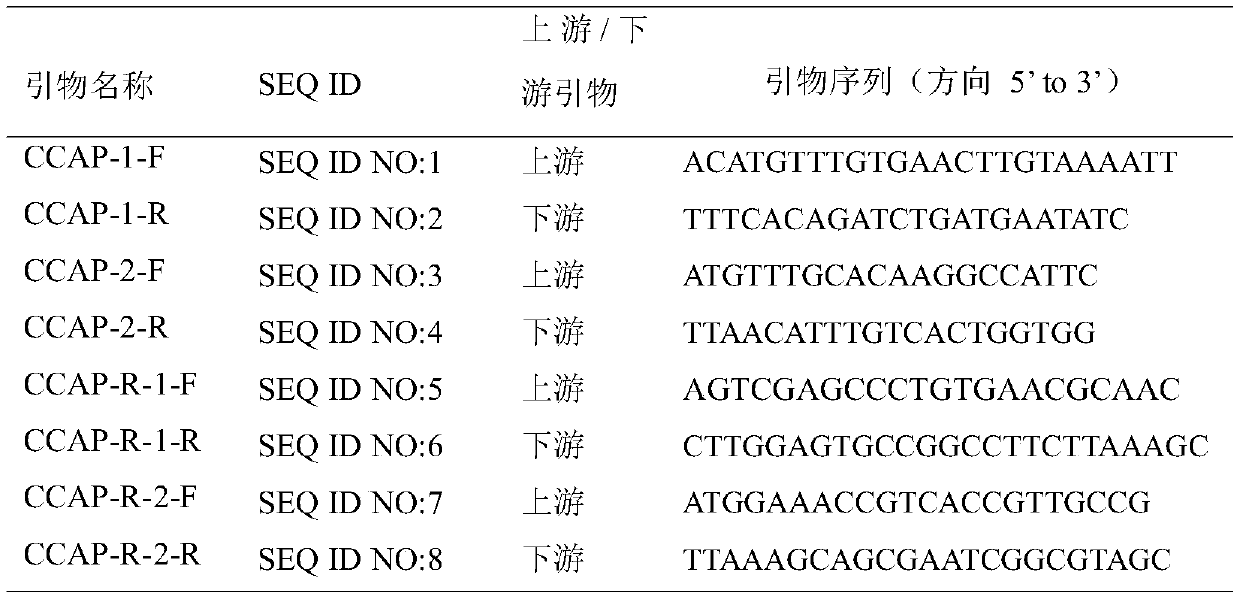Acyrthosiphon pisum CCAP gene and ligand and receptor thereof, and application of acyrthosiphon pisum CCAP gene and ligand and receptor in aphid insect specific control agent
A CCAP-2-R, pea aphid technology, applied in the field of genetic engineering, can solve the problems of aggravating the outbreak of agricultural pests, low specificity of pesticides, hidden dangers of food safety, etc., and achieves the effect of good application prospects.
- Summary
- Abstract
- Description
- Claims
- Application Information
AI Technical Summary
Problems solved by technology
Method used
Image
Examples
Embodiment 1
[0036] Example 1 Obtaining the Open Reading Frame Sequence of Pea Aphid CCAP and Its Receptor
[0037] 1. Primer design and amplification of the open reading frame sequence of the pea aphid CCAP and its receptor:
[0038] Based on the genome and transcriptome database of the pea aphid, the CCAP and CCAP-R of Tribolium castaneum were used for TBLASTN search, the nucleotide sequences of CCAP and its receptor CCAP-R were predicted, and CCAP was designed and amplified The nested PCR specific primers are CCAP-1-F / CCAP-1-R (the first round of amplification primers) and CCAP-2-F / CCAP-2-R (the second round of amplification primers), the amplification The primers of CCAP-R are CCAP-R-1-F / CCAP-R-1-R (first round of amplification primers) and CCAP-R-2-F / CCAP-R-2-R (second round of amplification primers) primers), the primer sequences are as follows:
[0039]
[0040] The total RNA of the pea aphid was extracted with an RNA extraction kit, and reverse-transcribed into cDNA with a rev...
Embodiment 2
[0053] Example 2: Determination of the Binding Ability of the Ligand Polypeptide to Its Receptor Based on the Method of Intracellular Calcium Ion Flux Detection 1. Construction of the CHO (Chinese Hamster Ovary Cell) Cell Expression Plasmid of Pea Aphid CCAP-R
[0054] Construction of pcDNA3.1-CCAP-R expression vector: add Kpn I and Xba I restriction sites to the ORF of CCAP-R by PCR, and use Kpn I and Xba I to perform restriction digestion, pcDNA3.1(+) Plasmids were also digested with Kpn I and Xba I and then ligated. After ligation, transform according to the above-mentioned transformation method. After the positive identification of the bacterial liquid was correct, the plasmid was extracted with a plasmid extraction kit, and the CCAP-R fragment was constructed. pcDNA3.1(+) plasmid.
[0055] Two, the above-mentioned pcDNA3.1 (+) plasmids obtained by constructing the CCAP-R fragments are co-transfected respectively, and are operated according to the following steps:
[0056...
PUM
 Login to View More
Login to View More Abstract
Description
Claims
Application Information
 Login to View More
Login to View More - R&D
- Intellectual Property
- Life Sciences
- Materials
- Tech Scout
- Unparalleled Data Quality
- Higher Quality Content
- 60% Fewer Hallucinations
Browse by: Latest US Patents, China's latest patents, Technical Efficacy Thesaurus, Application Domain, Technology Topic, Popular Technical Reports.
© 2025 PatSnap. All rights reserved.Legal|Privacy policy|Modern Slavery Act Transparency Statement|Sitemap|About US| Contact US: help@patsnap.com


